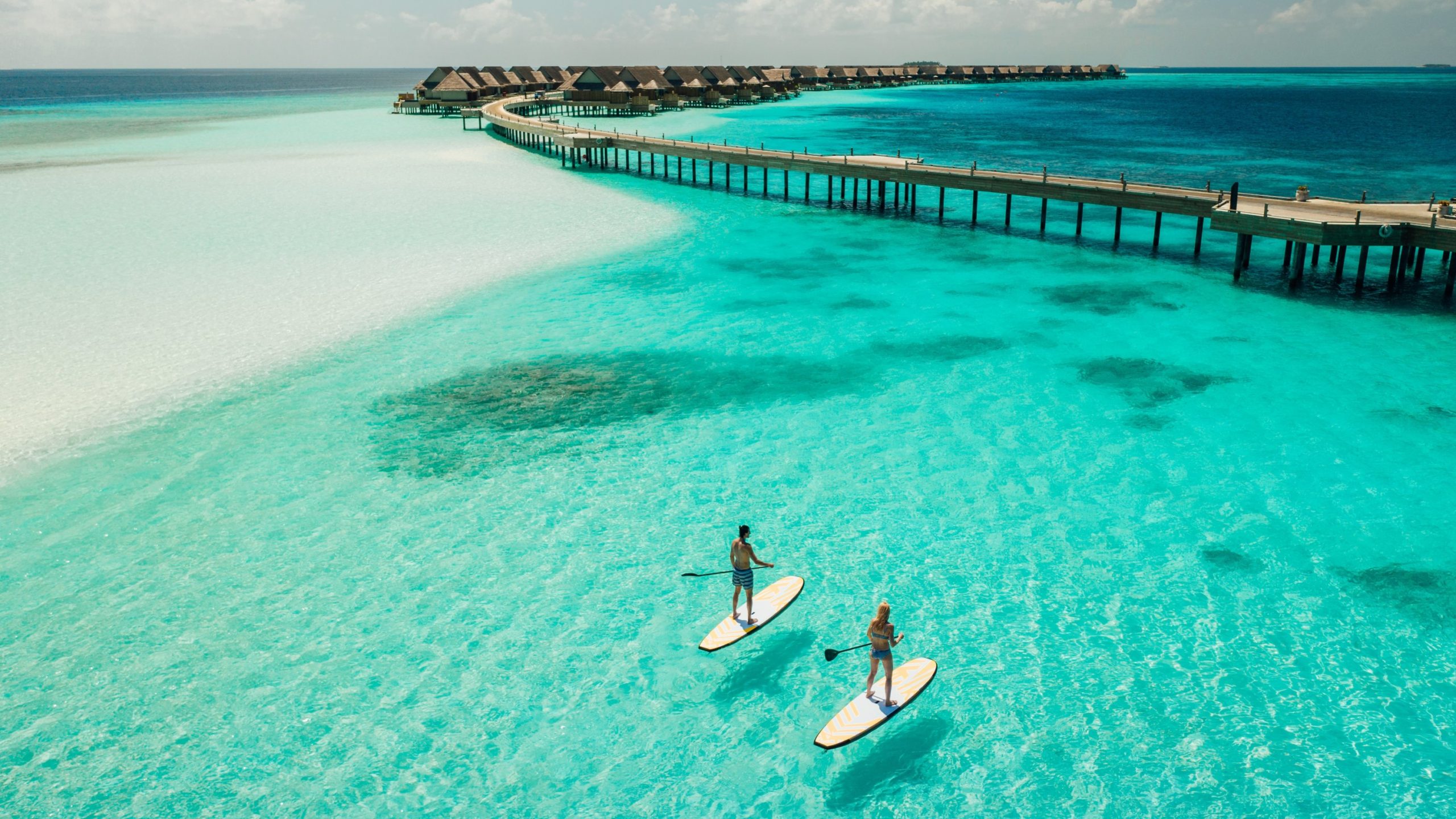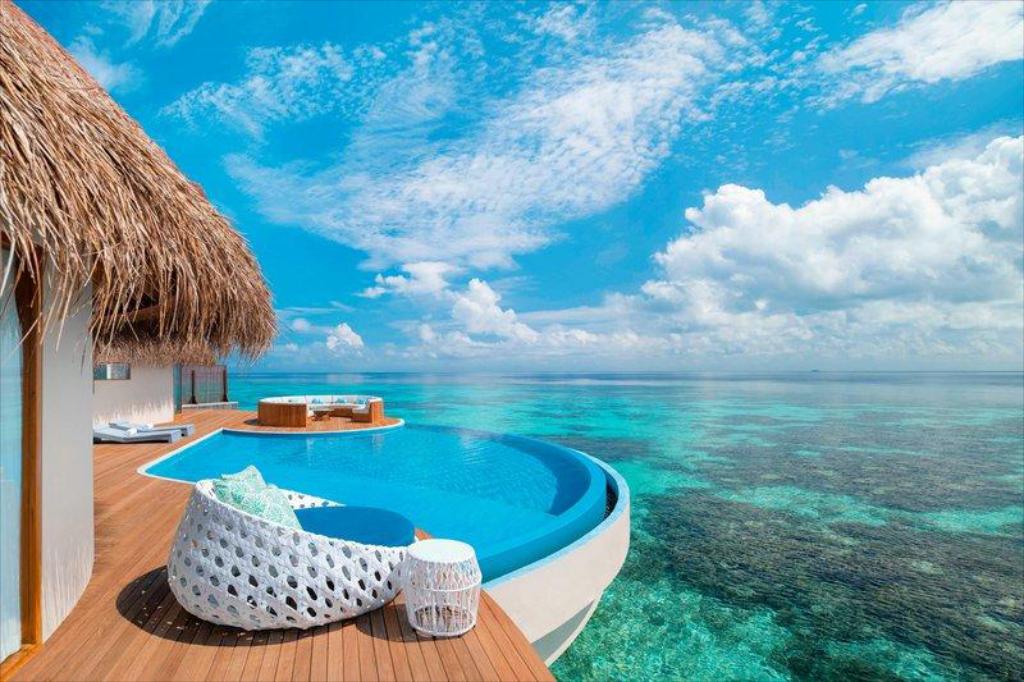
Sun, sand and the sea. That is what Maldives is all about. Fly to Male, the capital of the republic. The airport is located on Hulhule island, a strip of island in the middle of the Indian Ocean. Most visitors to the Maldives are met by travel agent reps right outside Customs, who then whisk them away to their resorts by speedboat or plane. If your destination is the city itself, turn right and head for the public ferry dock. Ferries to the city take about 15-20 min and leave every 10-15 min during daytime. (Rf10 or US$1 if you do not have local currency)

For 40% of visitors, the Maldives’ main attraction is below the surface of the ocean. Every island has a diving school to take visitors to a marine wonderland. The Maldives is a unique nation in which the sea forms 99% of its territory. But paradise is paying its dues. The islands are low-lying, rarely reaching above two metres, and the white, sparkling beaches are scalloped by shallow lagoons. A serious environmental issue is the problem of a rising sea bed and the erosion of islands caused by climate change and the stripping of reefs due to human activities such as diving. Thankfully, world support has rallied to save this fragile paradise from sinking away. A breakwater was also built around Male island as part of its coastal defence.

A visit to the capital Male is a doorway into the Maldivian way of life. The square-shaped island is packed with local colour. The waterfront is a hub of activity as everything arrives by sea, with ferries being the main mode of transport. Walking around the capital, one is impressed by the spotlessly clean pavements and neat white-washed buildings. The Presidential Palace and Islamic Centre with its Grand Friday Mosque are charming structures featuring sandstone and coral.

Islamic Centre is Male’s best-known architectural landmark. The complex contains the largest mosque in the Maldives, topped with a golden dome and capable of accommodating 5,000 people. Visitors are welcome inside outside prayer hours, but no interior photographs are allowed.

The old worldly National Museum, once a small palace within a park, is fascinating to visit. It houses a scruffy, haphazard collection of royal regalia and old photographs, including three moon rocks and a faded Maldivian flag that went to the moon.
At the Republic Square (Jumhooree Maidhaan), it serves as Male’s centerpoint. This little park on the north coast is marked by a flagpole with a giant Maldivian flag. It is also the focal point of every political demonstration in the capital.

Walking through the town, we come across the fish market where baskets of catch are tossed onto the floor for sorting. Souvenir shops are packed with island crafts, few of local origin. Slowly, the profits of tourism are slowing trickling down to the common man. However, most of the tourists usually skip Male and head straight to the all-inclusive resort islands, spending all their money there. Head to the Male Market in the northern part of the city. Vendors energetically hawk their goods in this busy market. A must if you’re spending a few days in Male.


The Maldives is a romantic destination, but I had visited it solo. Did I feel out of place with the honeymooners around? No, I did not, thanks to Couchsurfing, where I met a bunch of fellow travellers either traveling in groups or solo just like me. We made a great alliance and spent a good time together. The romance of seclusion, self-discovery, renewal and natural beauty are all heavily marketed. If you want to relax, take a few books, swim and forget the world. This was what I did with my new found friends at the beach of an island where we visited for the day.
There is a willow-of-the-wisp quality about the Maldives that makes visitors want to kick off their inhibitions and dance barefooted in the sand.
How to get there?
Both Singapore Airlines and Scoot offer direct flights from Singapore to Male.
